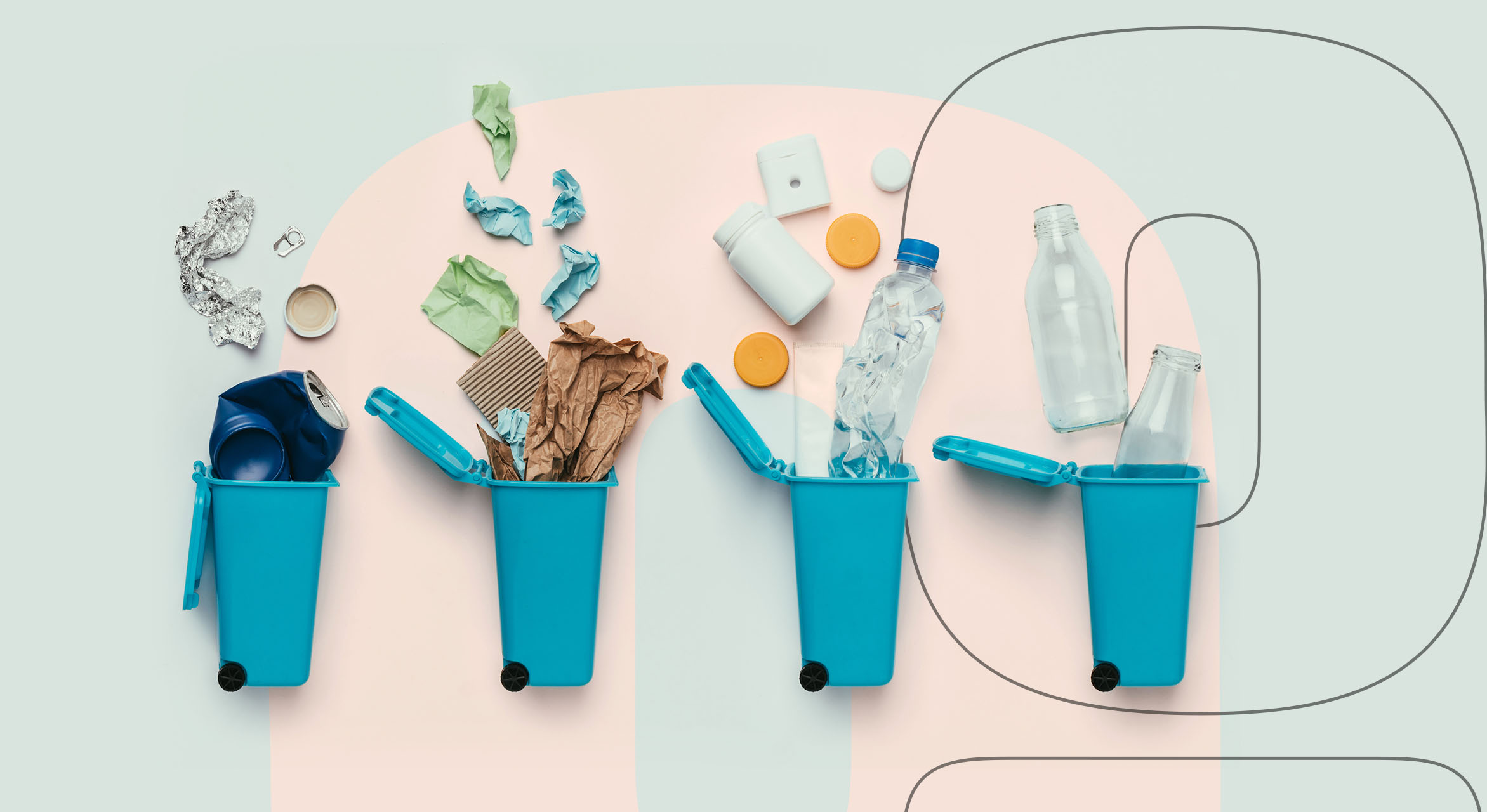
Reduce, Reuse, Recycle: The Basics
We are reader-supported. When you buy through links on our site, we may earn affiliate commission.
Reduce, reuse, recycle.
It’s a saying that takes many back to their elementary school years. As a kid, you probably were taught in science class how to take action for the environment. Maybe you went home and set up a box for all your recyclables, or perhaps you stood by the sink and urged your parents to turn off the water while they were brushing their teeth. While the Three Rs may make you think about the past, they’re actions for now and the future.
Now that you’re an adult and more aware of the pressing topics surrounding the planet, like climate change and plastic pollution, you may be more inclined to hearken back to your elementary days of learning about the three Rs. These are great ways to help minimize your waste and protect the environment around you, like conserving natural resources and energy.
The way you choose to deal with your waste is up to you, but it affects the world’s environment. You need a healthy environment for your wellbeing, so it’s best to choose a way to deal with waste best for you and your surroundings. Here are the basics of reducing, reusing and recycling and how you can implement them into your daily life.
Reduce
It’s easier to manage your waste if you don’t produce any in the first place. By reducing the amount of waste you create throughout the day, you’re helping the planet. Making new products requires energy and materials. Those materials need to be extracted from the earth, assembled and then transported to a store for you to purchase. When you reduce the number of products you buy or use, you’re reducing that impact on the environment.
Reuse
Instead of throwing a product away, reuse it if possible. Many items are for a single-use purpose. However, those items can certainly be used again if used with proper care the first time. You can reuse them for the same purpose, or you can find another way to use the product. It’s economically and environmentally sensible to reuse your products.
Recycle
Recycling is a process, but it’s worth it to separate your waste into proper recycling bins. It takes used materials, like cardboard, plastic, glass, paper and others and processes, manufactures and redistributes them as something new. Maybe you own a container made from recycled plastic, or your coffee sleeve is made from recycled paper.
The product gets a whole new life when it’s properly recycled. When you recycle, you limit the number of new materials needed for a product, therefore helping the environment. In 2018, Americans recycled nearly 70 million tons of municipal solid waste!
How to Live a Sustainable Lifestyle by Reducing, Reusing and Recycling
Once you start living a more sustainable lifestyle, you won’t want to stop! There are so many benefits for you and the environment when you choose to reduce, reuse and recycle your waste. It’s easy to throw everything in the trash, but it’s even easier to get into a habit of environmental friendliness. Below are some ideas on how you can begin reducing, reusing and recycling both in and out of your home:
- Purchase products that use less packaging. You can buy in bulk or bring your own reusable packaging for fruits, vegetables, pasta and grains.
- Buy used items instead of new ones. Whether you need clothes, decorations or building materials, you can almost always find something previously used. You can even purchase a used vehicle!
- Instead of purchasing a new product, try to fix it or repurpose it in a way that you can still use it. By maintaining things like clothes and appliances and repairing them when broken, you won’t have to throw them out or replace them as frequently, saving on materials.
- Purchase items that you know you can reuse. For example, use reusable grocery bags or storage containers for kitchen items.
- If you need specific items that you don’t often use, like decorations, borrow or rent them from someone else.
- Donate items that you don’t use anymore but are still in good condition. One person’s trash is another person’s treasure!
- Set up recycling bins in your home and encourage your family to dispose of their waste in the proper containers.
- Begin composting your food items to turn them into rich soil and nutrients. Sending those food items to the landfill causes harmful emissions.
- Avoid single-use or disposable items, which have to be replaced again and again.
- Reduce your water and energy consumption. Turn off the water as you brush your teeth and purchase appliances and products that consume less energy.
There are so many other ways to live a sustainable lifestyle. Start with these ideas, and you’ll find ways to limit your waste throughout every area of your life.
For You and the Planet
When you choose to reduce, reuse and recycle, you prevent pollution, save energy, save money, sustain the environment and reduce greenhouse gases. It benefits you and the environment, so why not start today?
Share on
Like what you read? Join other Environment.co readers!
Get the latest updates on our planet by subscribing to the Environment.co newsletter!
About the author
Jane Marsh
Starting from an early age, Jane Marsh loved all animals and became a budding environmentalist. Now, Jane works as the Editor-in-Chief of Environment.co where she covers topics related to climate policy, renewable energy, the food industry, and more.





